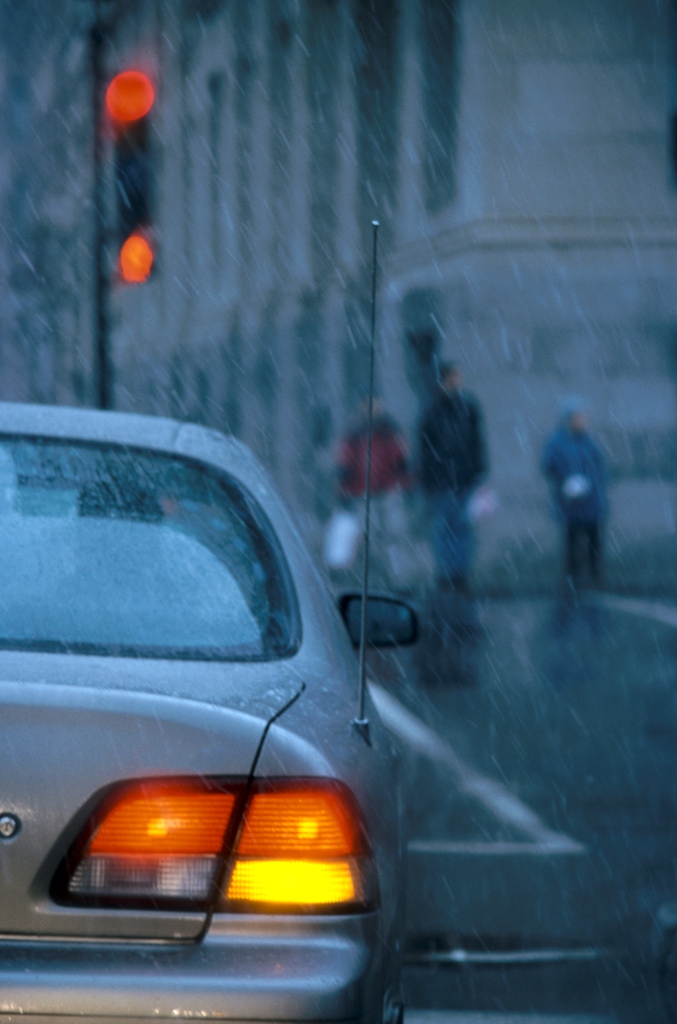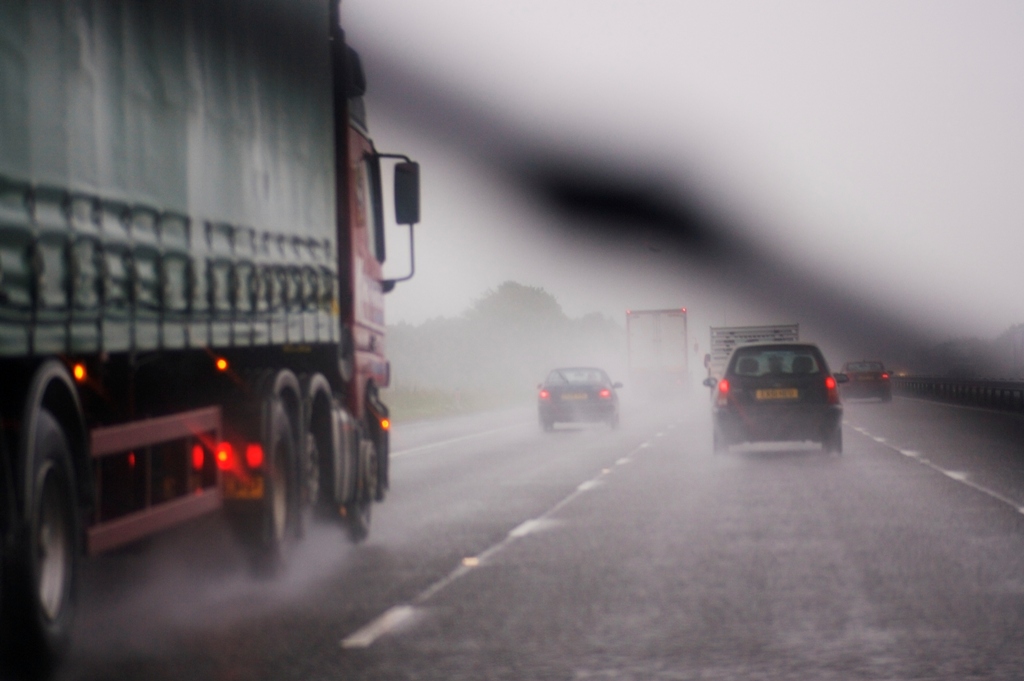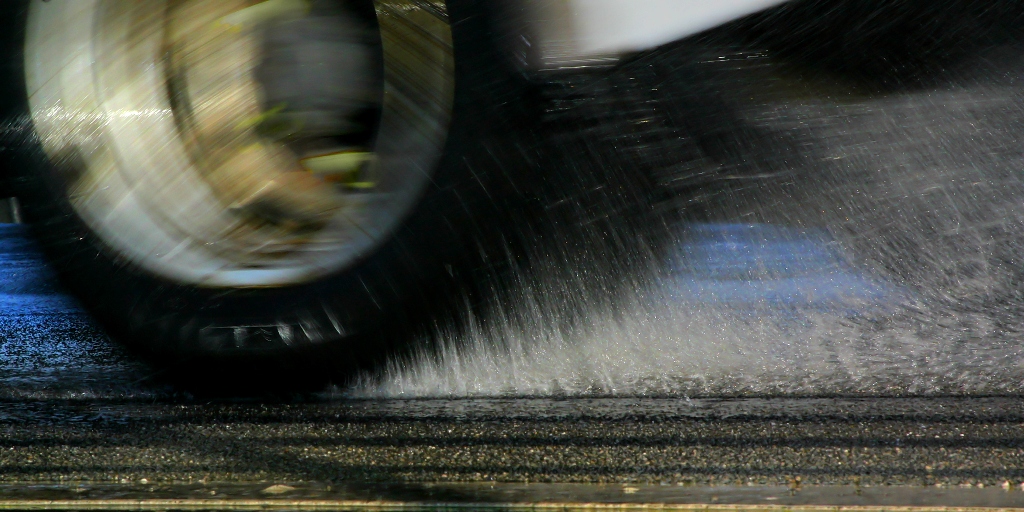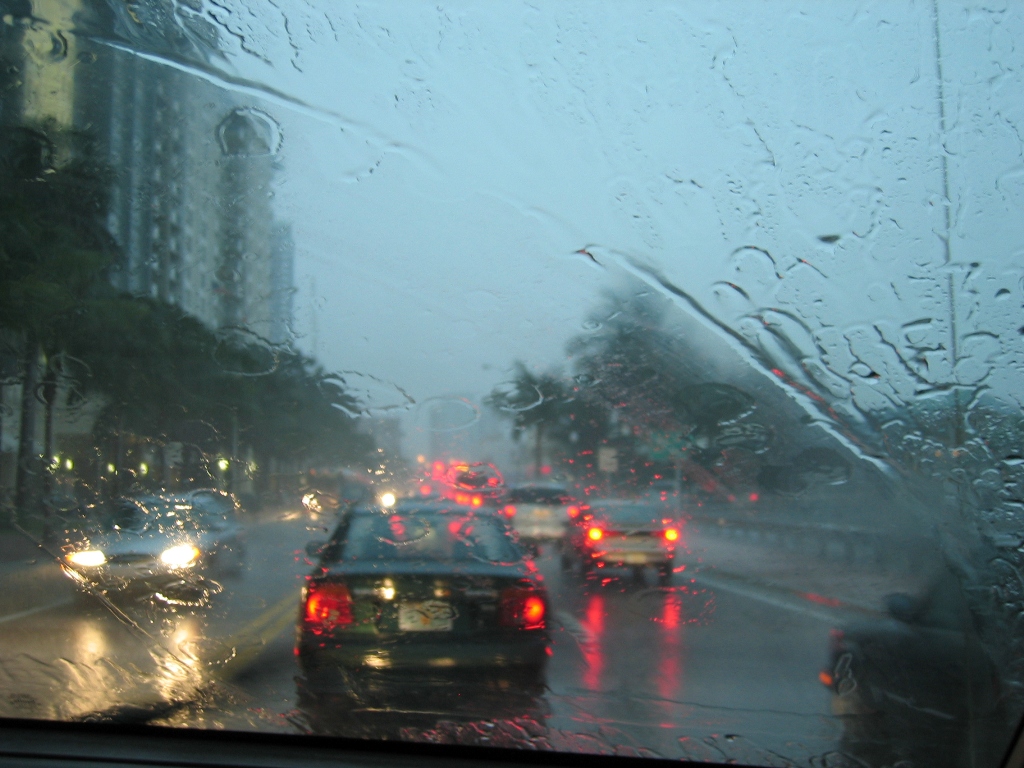April showers bring May flowers? In Virginia rainfall amounts actually peak in July, however with spring advancing now is a good time to think about educating your drivers about how to change their habits during rainy weather conditions.
Rainy weather and wet roads sometimes causes people to panic and use unsafe driving habits. Taking the proper precautions before and during your drive can make your trip in the rain much safer.
Hydroplaning and skidding
Hydroplaning occurs when a wedge of water builds up in front of the tires, and if going too fast the tires themselves can actually begin to spin on the surface of the water.
If you have ever experienced this before it feels like driving on ice, and can be a terrifying situation. According to the National Safety Council, hydroplaning can occur at speeds as low as 35 mph and with as little as ½ inch of water on the pavement.
In light of these facts, drivers must lower their speed and be on alert for puddles of water that have accumulated in low areas of the roadway. Also, avoid fast accelerations and turn off cruise control to prevent a sudden burst of acceleration. Both situations can cause a loss of steering control and/or fishtailing.
Stopping distance
 The distance needed to stop a vehicle increases on wet pavement, and drivers sometimes find themselves in situations where they need to stop quickly to avoid hitting the car ahead.
The distance needed to stop a vehicle increases on wet pavement, and drivers sometimes find themselves in situations where they need to stop quickly to avoid hitting the car ahead.
The ability to stop in time diminishes even more when the tires begin to skid. A normal following distance is three seconds, however when additional hazards are present such as poor visibility, water accumulation, tailgaters, etc., add an additional second for each hazard.
To avoid sudden stops or lane changes that can lead to collisions, increase your eye-lead time in an effort to identify hazardous conditions up ahead, allowing for smooth braking. And don’t forget to signal your intentions whenever you are going to change lanes.
Visibility
When visibility is poor for you, it is poor for other drivers as well. Virginia law states that when your wipers are on, your lights should be on as well. Use low-beam headlights in rainy conditions.
Key points
- Be prepared for rain or other adverse conditions by doing a pre-trip inspection.
- Make sure your wipers, defroster, and headlights work well. Check windshield washer fluid level.
- Slow down to maintain traction, avoid skidding and hydroplaning.
- On wet pavement increase your following distance and eye-lead time.
- Avoid sudden stops or lane changes that could lead to collisions.
- If you are going to stop or change lanes, signal your intentions well in advance.
- Turn on your headlights when using your windshield wipers.
- Turn off cruise control to prevent drive tires from spinning.
Resources: VML Insurance Programs (VMLIP) offers a number of free multimedia resources to assist members with their training needs. The video: Driving a School Bus in Fog, Wind, and Rain (#436) is available in VMLIP’s Multimedia Library.
The 25 minute DVD is designed to demonstrate how to use safe procedures when driving with poor visibility and addresses hydroplaning and the dangers of windbreaks, specifically targeting school bus drivers.
VMLIP offers more than just coverage. We are partners in risk management. How does your insurer stack up? Having all lines of coverage with VMLIP ensures that your organization is receiving comprehensive coverage and a wide variety of value-added services tailored to Virginia’s local governmental entities. Call for a quote today: (800) 963-6800. For more information on VMLIP visit: www.vrsa.us or follow us on Facebook.
** VMLIP blog postings are offered for VMLIP members to utilize in strengthening their risk management efforts. See copyright information for clarification on sharing this information.





